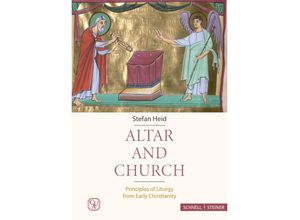An altar is a table or flat-topped block used as the focus for a religious ritual especially
for making sacrifices or offerings to a deity (Oxford Languages). Whether or not what
Christians use during service today is allowed to be an altar is a point of contention between
the denominations. However since the liturgical reform of the Second Vatican Council the
altar has been at the centre of many redesigns of Catholic church spaces. For this they like to
take the early Church as an example. In fact the Council points to the "norm of the Fathers".
But how can this be reconciled with the widespread opinion that Christianity initially knew no
cult and no sacrifices but only loved feasts and meals of sinners held in house churches? It
was not until later since the time of Emperor Constantine that a real state cult with
sacrifices altars and magnificent sacred spaces developed and the Church suffers from this
historical burden to this day. But is this really true? Or are they not rather clichés that
need to be critically questioned? This volume carves a few paths through the jungle and arrives
at results that are as surprising as they are stimulating.



